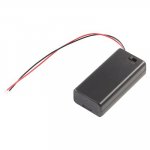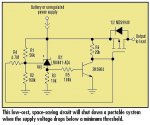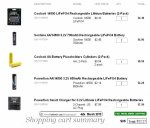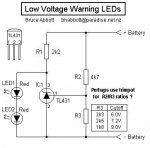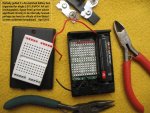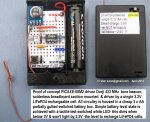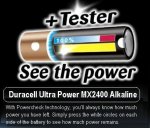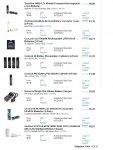I'm considering a portable wireless 08M2 PICAXE project to be housed in a 2 x AA switched battery box, powered by a single LiFePO4 rechargeable 14505 cell. These lightweight cells are rated at 3.2V 600 mAh, 0.6A rate, 2.2Wh, ~2000 cycles & are standard AA size. Although the capacity is low (but adequate as current drain will max at ~50mA & normally be "SLEEPing") they retain a pretty flat 3.0-3.2V discharge curve. The idea is to use the other battery box cell space for the PICAXE circuitry.
I'm well aware of the increasing number of AA sized LiFePO4 now available (often for just a few $ & even turning up in better solar garden lamps),but my pondering relates to their charging needs. Compared with other Lithium's they seem pretty charge tolerant, but as I may use solar "top ups" (with naturally a varying supply), I'll hence not have the luxury of a specific 3.6V mains smart charger.
Although Google shows diverse LiFePO4 smart ICs & circuitry, many are overkills for my modest needs, while others tend almost laughably simple. Hence any LiFePO4 personal experiences & cost effective charging insights would be welcomed ! Stan.
I'm well aware of the increasing number of AA sized LiFePO4 now available (often for just a few $ & even turning up in better solar garden lamps),but my pondering relates to their charging needs. Compared with other Lithium's they seem pretty charge tolerant, but as I may use solar "top ups" (with naturally a varying supply), I'll hence not have the luxury of a specific 3.6V mains smart charger.
Although Google shows diverse LiFePO4 smart ICs & circuitry, many are overkills for my modest needs, while others tend almost laughably simple. Hence any LiFePO4 personal experiences & cost effective charging insights would be welcomed ! Stan.
Attachments
-
10.1 KB Views: 24
-
96.8 KB Views: 29

